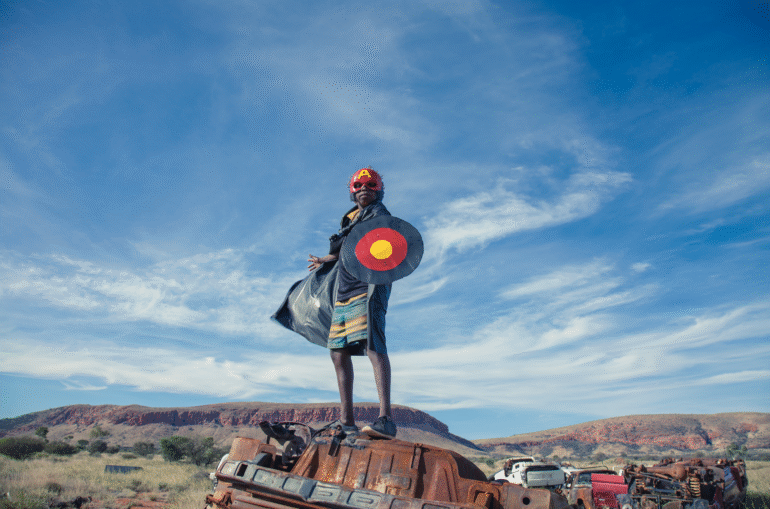Every summer, the city of Arles becomes a crossroads of heritage and contemporary vision—not just through Les Rencontres d’Arles, but also via its UNESCO‑listed landmarks, Van Gogh legacy, and the wild beauty of the Camargue. In its 56th edition, the photography festival, running until 5th October, embraces the provocatively defiant theme Disobedient Images, under the directorship of Christoph Wiesner. Drawing inspiration from philosopher Édouard Glissant and anthropologist Alban Bensa, the festival invites us to consider images as acts of resistance, cultural dialogue, and identity reinvention—from Australia and Brazil to North America and beyond
The 56th edition of Les Rencontres d’Arles brings together powerful, boundary-pushing photography under the theme Disobedient Images. Inspired by writer Édouard Glissant, this year’s festival explores identity, cultural exchange, and photography as a tool of resistance and transformation. Exhibitions span historic and modern venues across Arles, showcasing global talent from Australia to Brazil, the Caribbean to North America.
Beyond the festival, Arles itself is a summer destination worth exploring. A UNESCO World Heritage site, it’s home to Roman monuments like the Amphitheatre and Saint-Trophime Cathedral, and has deep ties to Vincent van Gogh, who painted some of his most iconic works here. Don’t miss the Fondation Van Gogh, currently hosting a major Sigmar Polke show featuring original Van Gogh pieces. For nature lovers, the nearby Camargue—known for its wild beauty, pink salt flats, and flamingos—is a must-visit.
Six Culturalee Picks are; On Country: Photography from Australia; Ancestral Futures: Brazilian Contemporary Scene; Keisha Scarville Alma; LËT’Z Arles Luxembourg Photography award 2025 winner Carine Krecké; Belle.beau; and Analogue Apertures.
On Country: Photography from Australia
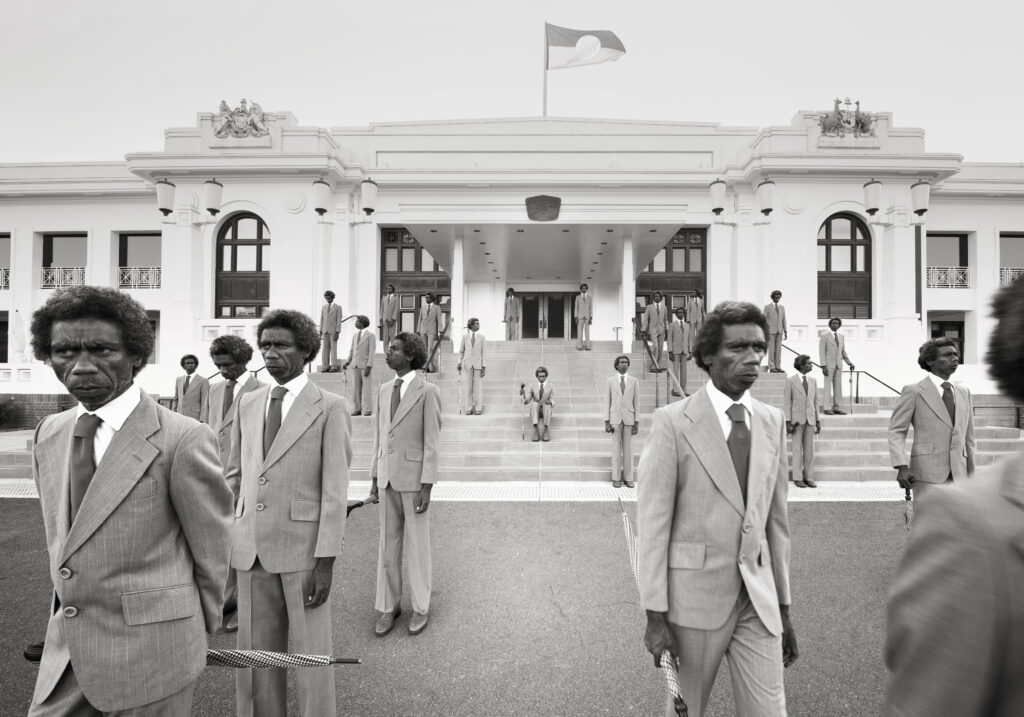
On Country: Photography from Australia explores the deep and spiritual relationship that Aboriginal people have with their land, which extends far beyond the merely geographical. In transcending colonial history and modernity, this bond is expressed through works in which photography becomes a tool of transmission and resilience in the face of climatic and political disturbances that threaten this cultural legacy.
Curated by Elias Redstone, Kimberley Moulton (Yorta Yorta), Pippa Milne and Brendan McCleary, On Country presents artists who connect to Country in dynamic ways and are shifting the power dynamics inherent in photography, redefining photographic practice on this southern land.
“Country” is a term embodied by First Peoples in Australia to describe the lands, waterways, seas and cosmos to which they are connected. It represents Ancestral ties to a place, and the living cultural presence of that place, and references the complex relationship land has to language, family and identity. Being “on Country” is more than just being situated somewhere, it is about being shaped by that place, connected to it, and having a responsibility to care for it.
Placing First Peoples’ practice and relationality at the core of this exhibition, On Country: Photography from Australia brings together Indigenous and non-Indigenous artists who bear witness to both the visible and invisible aspects of being on Country. Through their work, the exhibition explores old and new relationships between Country and colonialism, community, and identity in Australia today.
Australia has a complex history that is underpinned by over 60,000 years of continuous and unceded First Peoples connection—comprising over 250 different language groups or “countries”. There has since been over two centuries of colonization, whereby settler and diaspora communities have made the continent their home. The nation is a shared space of multifaceted histories and stories, and although colonialism has attempted to suppress First Nations People, their culture has continued and is strong and living today.
In contrast to its historic use as an early tool for ethnographic documentation in Australia, the artists in this exhibition embrace photography as a medium for truth telling, self-determination and collaboration, both acknowledging the past and suggesting possible futures. Culturalee highlights include; James Tylor’s stunning monochrome abstract landscapes; Aton Atem’s captivating portraiture; Maree Clarke’s unforgettable black and white portrait series Ritual and ceremony; Michael Cook’s powerful images commenting on racist tropes including Majority Rule (Bus); and Lisa Sorgini’s beautifully surreal images capturing the wonder of nature and the innocence of childhood.
Keisha Scarville Alma
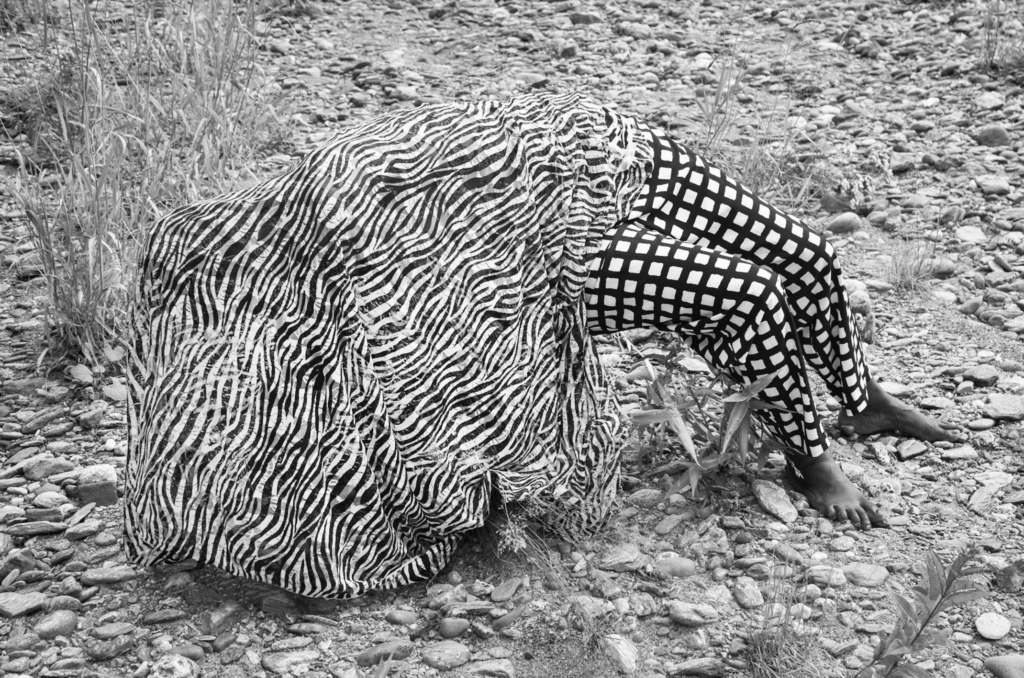
Following the death of her mother in 2015, Keisha Scarville turned to photography as a means of exploring the materiality of absence and its impact on those who remain. Drawing aesthetic inspiration from a range of sources—including spirit photography and the ancestral figure of Egungun—Scarville incorporates her late mother Alma’s clothing and personal belongings to invocate her presence. She also stages herself in delicate black-and-white portraits, using her own body as a medium to make absence tangible. The original brilliance of the printed fabrics, now stripped of their colors, poignantly reflects the pain of loss and the transformations it engenders. The power of Scarville’s images lies in their ability to transmute grief into pure beauty. At once an act of mourning and a celebration of Alma’s life and legacy, these photographs possess a profound capacity to evoke, embody, and delve into that which has been transformed.
Ancestral Futures: Brazilian Contemporary Scene
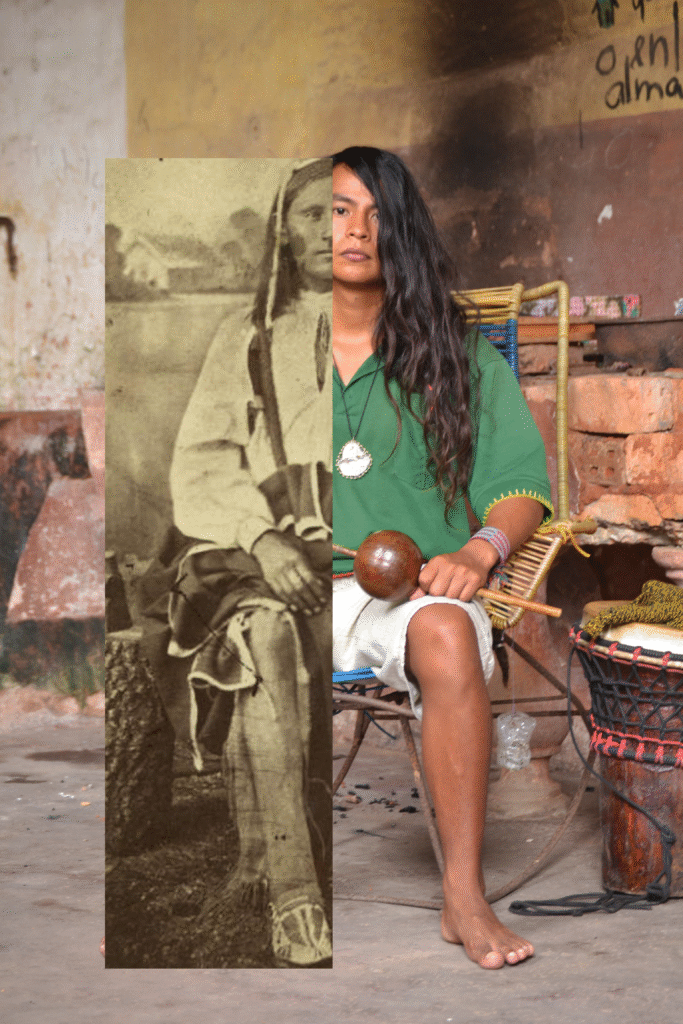
Ancestral Futures, curated by Thyago Nogueira presents a new and generation of artists working with photography, video and collage to address contemporary Brazil society and history by reinterpreting its visual archives and traditions.
Ancestral Futures proffers a reflection on memory and identity: through a reinterpretation of visual archives, the artists question the colonial legacy and the struggles of the Afro-Brazilian, indigenous and LGBTQIA+ communities. Through a critical lens, they redefine representations, opening new perspectives on history and the future, while the debates on the restitution of patrimony and the rewriting of founding narratives intensify. Their political attitude is also expressed by challenging the integrity and the formal qualities of the photographic frame.
The title of the show echoes indigenous philosopher and activist Ailton Krenak’s book Ancestral Future, which challenges the Western idea of progress as a chronologically and linear time to propose a future that is built by looking back to essential elements of the past. Artists like Denilson Baniwa, Ventura Profana, Gê Viana, Mayara Ferrão, Yhuri Cruz and Igi Lọ́lá Ayedun use photo collage and AI to criticize colonialism and create visual archives with new representations of beauty, affection and spirituality.
Collective Lakapoy and filmmaker Lincoln Péricles also challenge official narratives by presenting photographic archives produced by their own communities. Indigenous leader Celia Tupinambá denounces the European colonial expropriation of indigenous peoples by reclaiming the return to Brazil of the sacred Tupinambá cloak and reviving its dormant sewing tradition with the women of her village. Artists such as Rafa Bqueer, Castiel Vitorino Brasileiro and Melissa Oliveira use direct photography and video to show how people’s bodies can also function as an archival territory where ancestral and spirit traditions are presented, disputed and remixed.
Paulo Nazareth’s self portraits function as an introduction to this new generation`s interest in performance and photography as a way to expose society`s prejudice and racism.
Carine Krecké ‘Losing North’, LËT’Z Arles Luxembourg Photography Award 2025 Winner
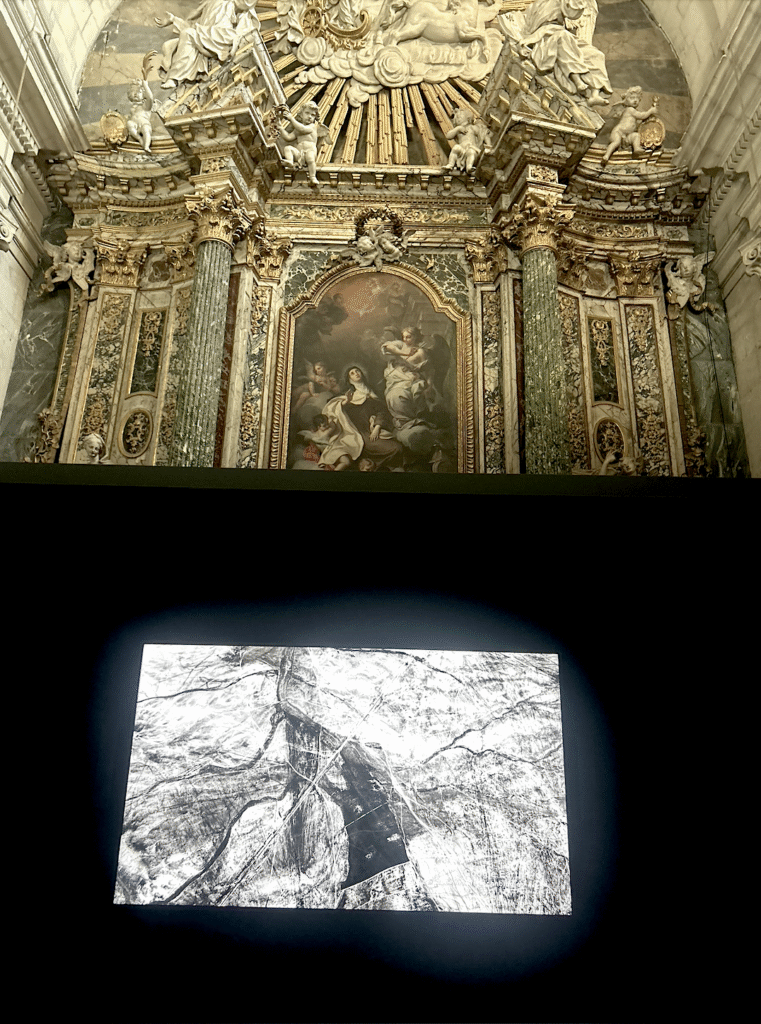
In June 2018, Luxembourg artist Carine Krecké stumbled across a series of photographs on Google Maps showing the destruction of Arbin, a town in the northeastern suburbs of Damascus. These images triggered an obsession that led her on a 6-year quest for information. Diving into the heart of official networks, forums and exchange platforms of all kinds, she explored stories of tragic fates, both collective and individual.
Faced with a mass of information to be verified, Carine Krecké investigates relentlessly, cross-checking testimonies on her computer. Never hesitating to expose herself to danger, she immerses herself in discussions, infiltrates networks and appropriates investigative and analytical tools.
Hyper-informed, analytical and discerning, the artist oscillates between lucidity and giddiness, hypnotised by images and stories, trapped in a fog of war in which reality and fiction become one. With Losing North–curated by Kevin Muhlen–Carine Krecké looks back on a total and personal immersion in a world that was not her own: the Syrian war. She deconstructs (and reconstructs) her investigative experience, which was both emotional and immersive, taking a step back from the images, the protagonists and the issues involved in her investigation.
The exhibition thus becomes a space suspended between reality and its representation, in which collected documents, stories and visual fragments interact with the architecture in which they’re contained. Through a series of previously unseen videos and a scenographic device designed as a kind of subjective map, spectators are invited to make their own way through these elements and experience the feeling of wandering through this labyrinth of information and perceptions for themselves.
By projecting her investigation into a dialogue with the space and the people who pass through it, Carine Krecké questions the relevance of perception when faced with war and the images that bear witness to it. Confronted with these recomposed visions, the public become participants in the work, contributing their own experiences, emotions and interpretations. The exhibition is more than a simple narrative: it is an invitation to rethink our relationship with information and images in times of conflict.
Belle Beau Gallery
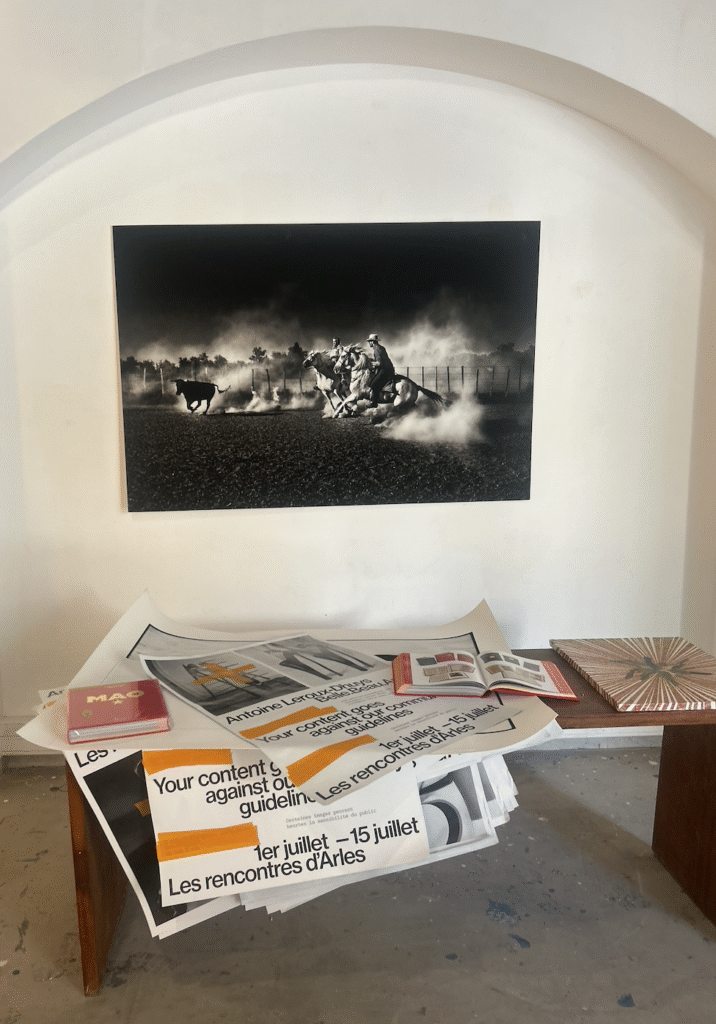
An intriguing group exhibition evoking the Surrealists can be found at Belle Beau gallery. The gallery name is derived from the manifesto which inspired its name “Manifeste Aesthethic”, and the gallery’s philosophy is that art is universal without boundaries or countries, resulting in an exhibition bringing together different medium including painting, photography, film, sculpture, installation and poetry.
Featuring Laurent Baude, Antonie le Roux-Dhuys, Julien Batifol, Stanislas Blohorn, Matthew Rose and Han Bing, the overall aesthetic is edgy, intellectual and resembles a contemporary Surrealist movement. Standouts of the exhibition are Stanislas Blohorn’s evocative monochrome photographs of his grandmother’s ranch Carrelet on the Camargue. Blohorn was locked down on the ranch during Covid when there was a government order to put all the bulls down for fear that they might carry coronavirus. Blohorn was devastated about the destruction of the beautiful animals, and he set about photographing and building totems from the bulls massacred by government regulations. He started the Delta Cuisine movement with La Chassagnette and is campaigning for Camargue to become Unesco heritage to safeguard horses, bulls, rice and wine cultivation.
Another highlight is Laurent Baude’s Immersion Rose, reimagining of a bathtub from the Marquis de Sade’s former house in Provence, which is repurposed as a wall-based sculpture filled with pink neon light. Collectors of Baude’s art include Paloma Picasso.
Antonie le Roux-Dhuys is a modern Dadaist who enjoys visual plays on words and uses digital manipulation to create double entendres, for example L’escabelle is the woman with the ladder instead of Escabeau. Julien Batifol reimagines vintage paintings by applying crosses to emulate the focus of a camera, and Han Bing’s flower paintings of vines at Mas St Gabriel in the Alpilles evoke the legacy of Van Gogh in Arles whilst referencing the performance art of Ai Weiwei.
Clément Marion – Analogue Apertures
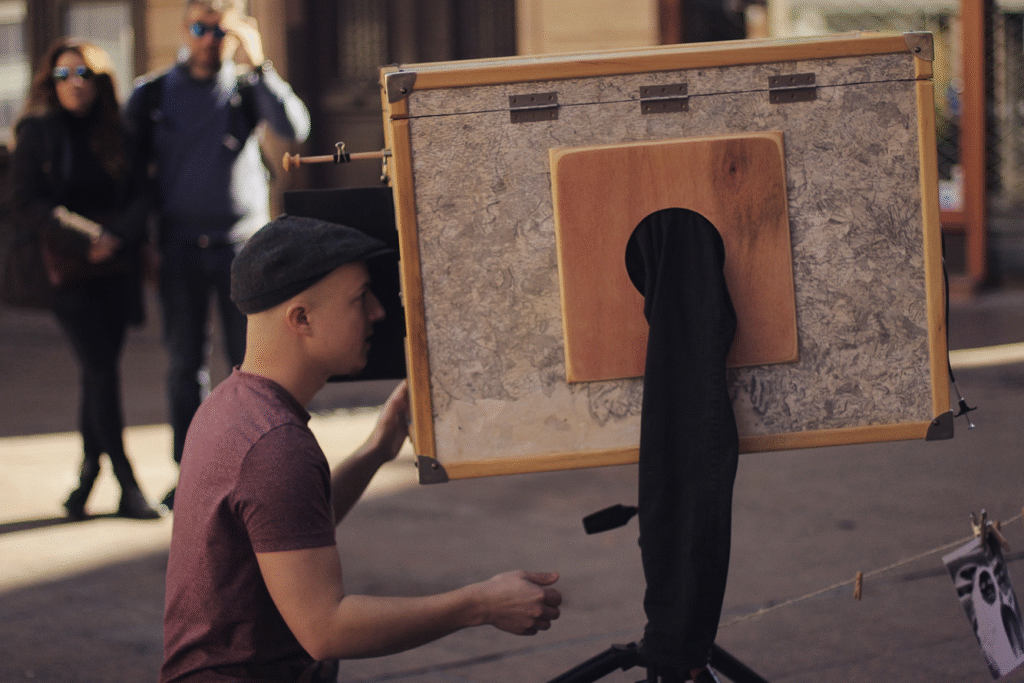
Young photographer Clément Marion of Analogue Apertures can be found during the summer in Arles’ historic Place de la République, where he sets up his travelling dark room and captures one-of-a-kind portraits of lone sitters and family groups.
Marion uses an Afghan box–a vintage technique involving a shooting part, which works like a camera, and a developing part, which is done in his travelling darkroom using the calotype technique. The technique allows shooting and silver printing on location and on site. The Afghan box was created by photographers from Afghanistan, South Africa, and was also known as Streetbox, Kamra-e-faoree, or Street Camera. These DIY photographers set up shop in public spaces and, in exchange for a coin, took an ID photo.
Marion has revived the technique as an intimate and immediate form of portrait photography which encourages personal encounters and immortalises personalities.


